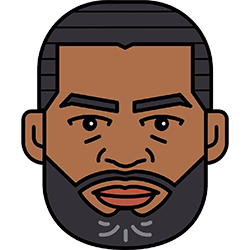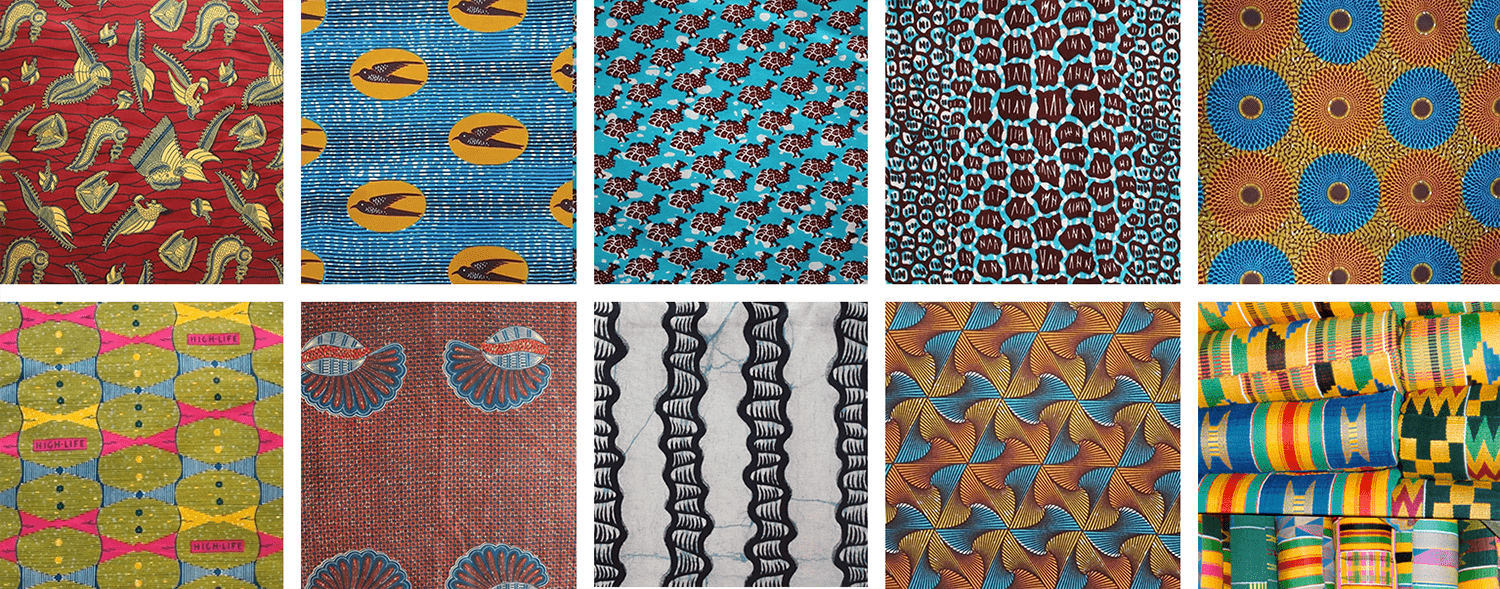Ankara, also known as African wax prints, is a vibrant and colorful textile that originated in Indonesia and has become a staple in African fashion. These fabrics are typically made from 100% cotton and feature bold, intricate designs that reflect the culture and traditions of the West African people. Ankara is a powerful form of storytelling, and the symbols featured in the prints are deeply rooted in tradition. They carry messages about strength, unity, wisdom, and community. When I work with African print fabrics, I’m not just choosing colors and patterns, I’m honoring stories.
Many of the meanings behind the symbols in these fabrics have been passed down through conversations, family traditions, and shared memories. While there are books and articles on this subject, much of what I’ve come to understand comes from oral history and community knowledge. There are hundreds of African Print styles and meanings – from traditional symbols to modern artist sketches. In this post, I’m sharing ten African print symbols that I believe are interesting and iconic. These interpretations are based on my experiences and the stories I’ve encountered over time.
1. Crevettes
The word “crevette” is French for shrimp, and the design features a curved, shell-like shape that resembles the form of a shrimp or prawn. Crevettes often represent adaptability, flexibility, and the ability to navigate life’s twists and turns.
When I choose this print, it is often to honor someone who has shown strength through change or who continues to adapt gracefully to life’s challenges.
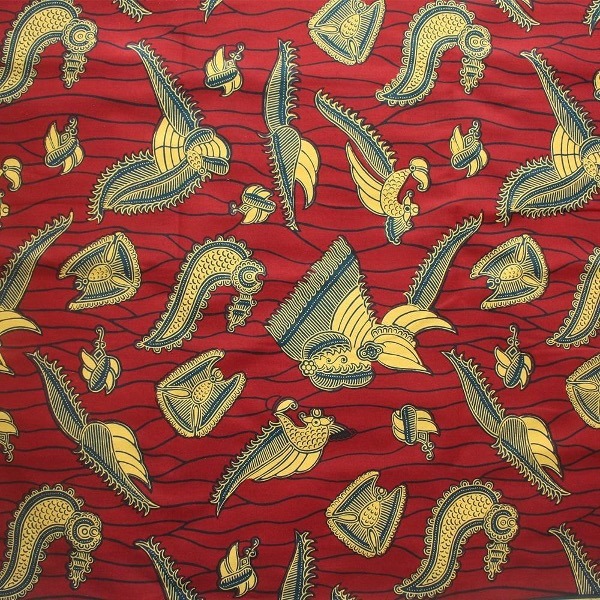
2. Sika Wo Antaban
(Speed Bird)
Sika Wo Antaban is one of the most culturally rich motifs found in African print fabric. The phrase comes from the Akan language and translates to “money has wings.” Based on oral traditions, this pattern is a reminder of how quickly wealth can come and go. It teaches humility, responsibility, and the importance of managing resources wisely.
I often choose this fabric to honor someone who worked hard, shared generously, or taught the value of discipline and balance
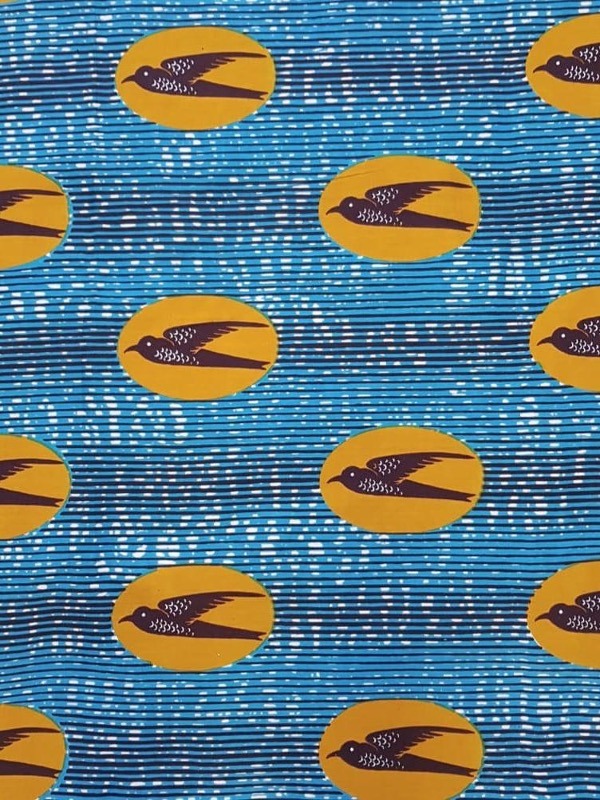
3. Guineafowl
Guineafowl is easily recognized by its dotted, feather-like patterns that mimic the plumage of the bird itself. This motif represents beauty, community, and protection. In many African cultures, the guineafowl is renowned for its strong social behavior and its ability to warn others of danger, making it a symbol of vigilance and unity.
I use guineafowl prints to celebrate themes of family, protection, and legacy.
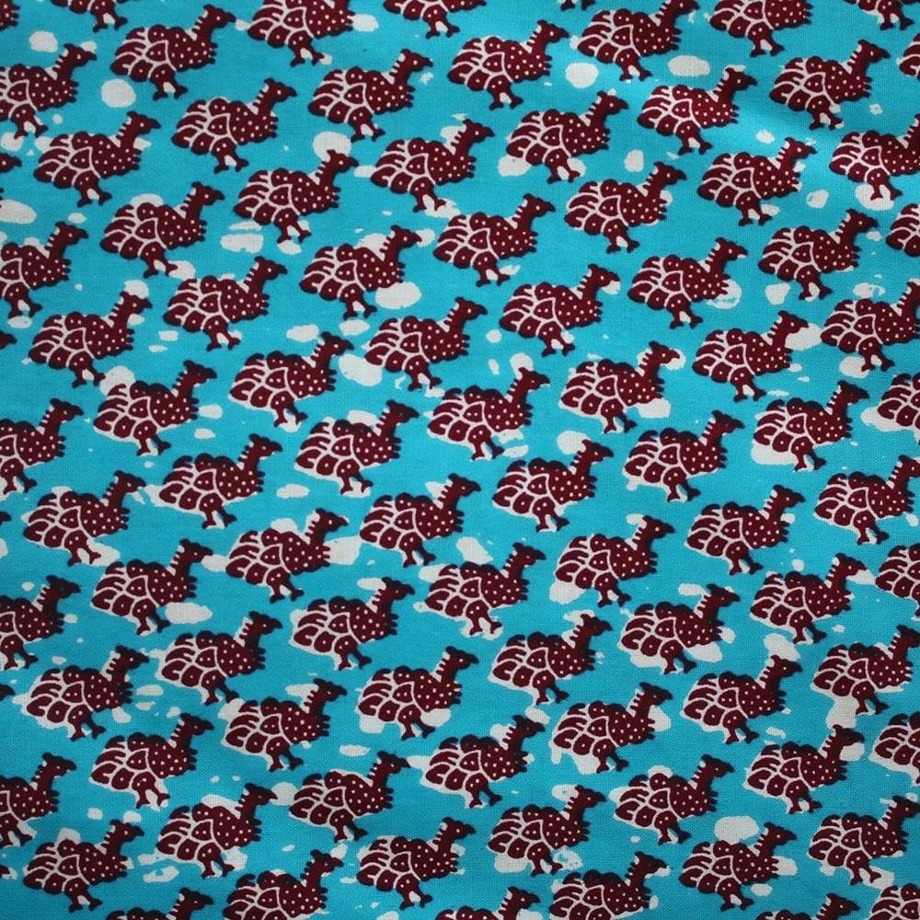
4. Efie Mmosea
(Family Gravel)
Efie mmosea, which translates to “the gravel of the home” in Akan, speaks to the idea that when hurt comes from within the family, it cuts the deepest. Just like walking barefoot on stones, pain from a loved one can feel unexpected and sharp because it comes from a place where we expect comfort and safety. It is a visual reminder that home is not only a place of love, but also a space where deep emotional challenges can live.
I may use it to honor someone who endured complex family dynamics or to acknowledge the complexity of love and pain within a household.
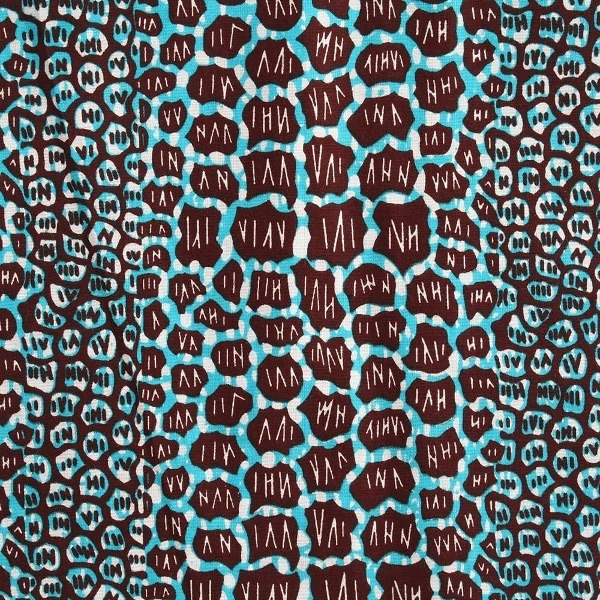
5. Nsubra
(Water Well)
Nsubra is the Ankan word for well, and it represents nourishment, community, and the essential role of shared resources. In many African villages, the water well is a central gathering place. It is where people meet, talk, and support one another while drawing what they need to sustain their lives. The design often features circular or ripple-like shapes that echo the appearance of water or the rings formed when a stone is dropped onto the surface.
I use this design to honor people or families known for their generosity, wisdom, or role as a source of support.
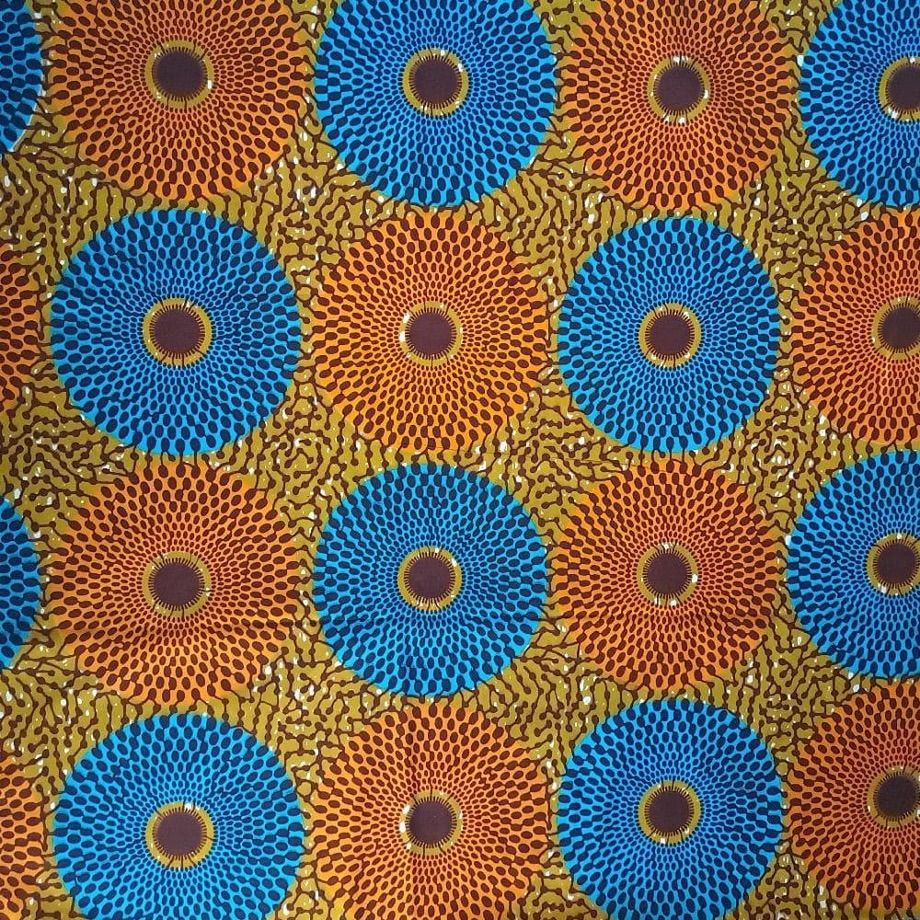
6. Highlife
The highlife pattern symbolizes celebration, upward mobility, and the enjoyment of life. The term itself originates from the vibrant music and dance scenes that became popular in Ghana and Nigeria, where dressing in bold, stylish prints was an integral part of the experience.
I use Highlife fabric to capture moments of triumph, celebration, or personal achievement. It is perfect for quilts that honor milestones such as graduations, retirements, or anniversaries.

7. Kwadusa
(Bananas)
Kwadusa is the Twi name for a popular African print design. This design is often referred to as “Bunch of Bananas”. It directly translates to “banana hand” in Twi, referring to a cluster of bananas. In Ghana, the design is also known as “Independence,” symbolizing Ghana’s independence and the strength and unity of its people.
I use Kwadusa fabric to celebrate stories of growth, generosity, and the strength of family ties. It is significant in memory quilts that honor people who provided for others or held families together.
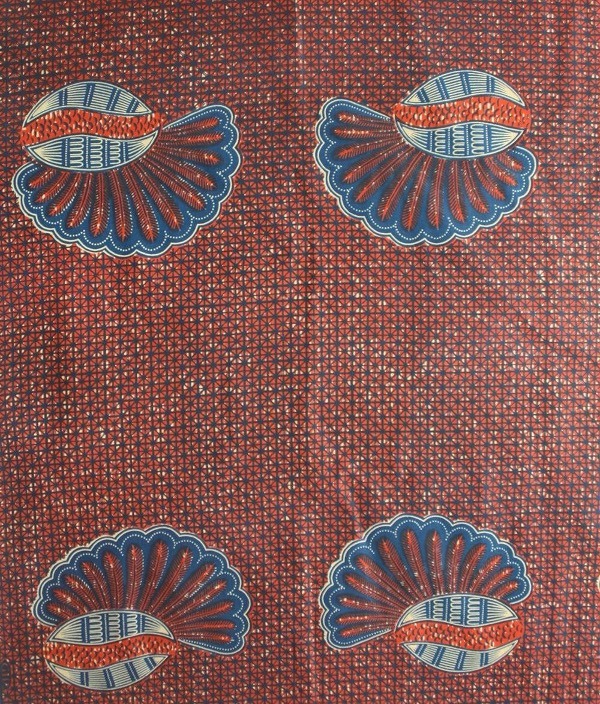
8. Sugarcane
Sugarcane represents sweetness after struggle, hard work, and the rewards of patience and perseverance. Sugarcane must be cultivated carefully and harvested with effort, but its natural sweetness is revealed only after the labor is done. This makes it a powerful symbol of hard work and meaningful reward.
I use sugarcane to honor someone who worked hard for their family, overcame adversity, or lived a life marked by quiet strength.
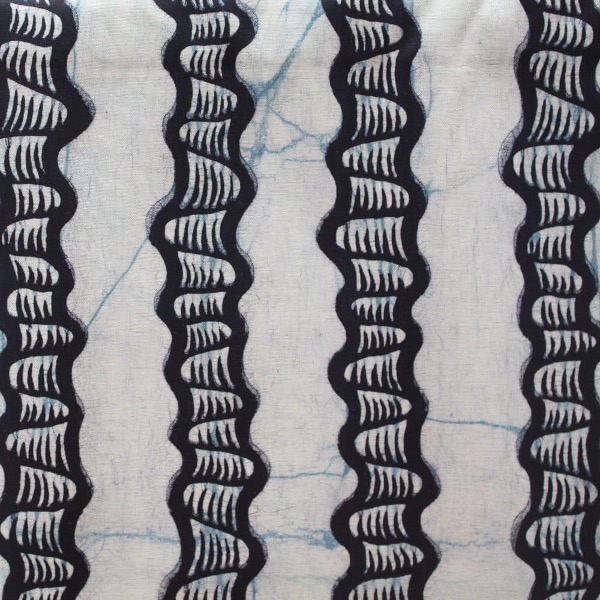
9. Santana
In African print fabric, Santana comes from the phrase often associated with the print: “Darling, don’t turn your back on me.” It is said to represent an angry woman lying in bed with her back to her husband, who is asking for forgiveness and begging her to turn around.
Including Santana in a quilt is a way to honor the full range of emotion, from devotion to heartbreak, and to give space to the stories that aren’t always easy to tell, but deserve to be remembered.
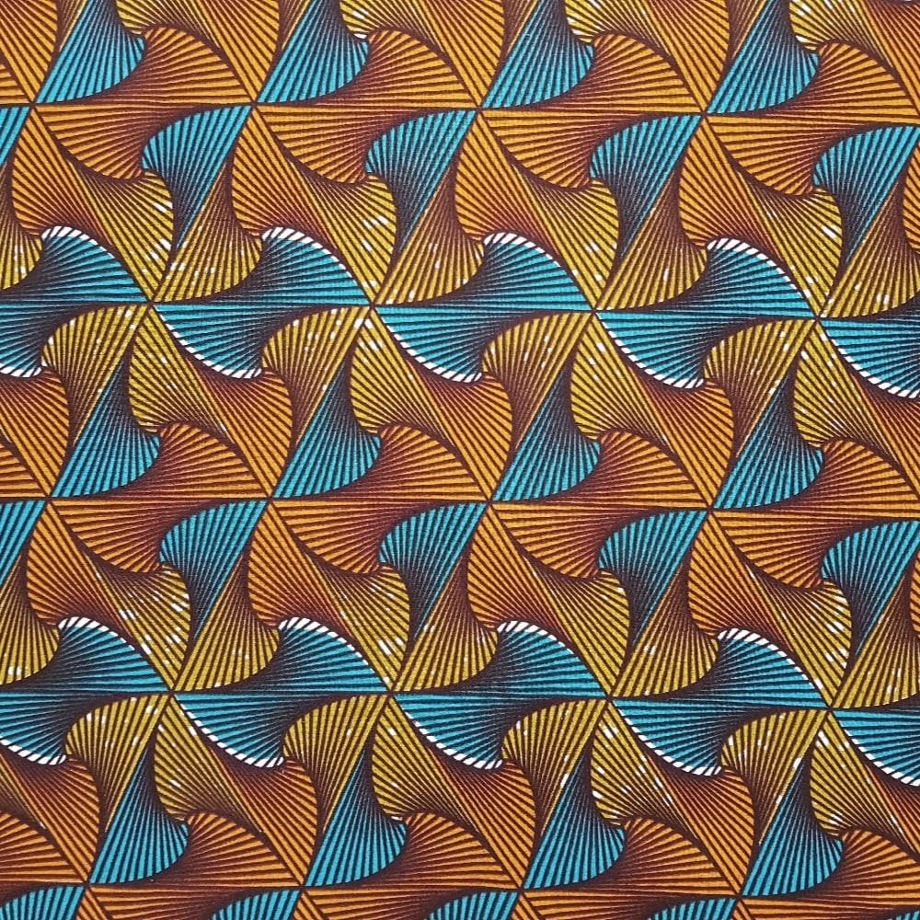
10. Kente
Kente is one of the most iconic and respected textiles in African culture, especially in Ghana, where it originated with the Ashanti and Ewe peoples. Unlike printed wax fabric, Kente is a woven cloth, traditionally made on narrow strip looms with bright, geometric patterns. Each color and pattern carries deep symbolic meaning.
Each color in Kente has a purpose. Gold represents royalty and prosperity. Blue stands for peace and love. Green reflects growth and renewal. Black signifies spiritual strength and maturity. The patterns themselves are often named and connected to proverbs, historical events, or traditional beliefs.
Kente is usually worn during important moments in life including weddings, graduations, and other ceremonies that mark transition or achievement.
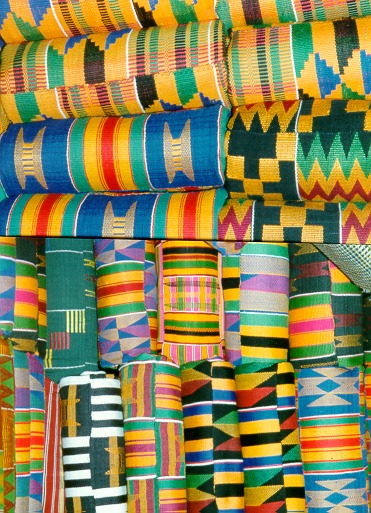
Ankara is a vibrant expression of culture, history, and identity. The ten symbols we explored in this post show how each pattern carries a message, whether it speaks of wisdom, strength, love, or unity. These meanings are more than design elements. They are stories passed down through generations.
At Quilts by Big Wes, I bring these stories to life by carefully choosing African print fabrics that reflect the spirit and message behind each quilt. When I create a memory quilt or custom design, I select symbols that speak to the journey, values, or legacy of the person it represents. A print symbolizing protection may honor a loved one, while a pattern representing courage might celebrate a personal milestone. Each quilt becomes a unique blend of cultural meaning and personal story. It is more than just fabric. It is a keepsake stitched with purpose and pride.
If you are ready to create a quilt that honors your story through the beauty of African print, reach out today. I would be honored to help you design something meaningful that you can cherish for years to come.
